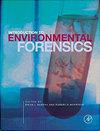台湾某农业基地大气污染物(微粒、汞(磷))之粒径分布与季节浓度研究
IF 1.2
4区 环境科学与生态学
Q4 ENVIRONMENTAL SCIENCES
引用次数: 0
摘要
摘要/ Abstract摘要:2020年1 - 9月,在台湾省中部某农业采样点,采用modi采样器对大气中不同粒径颗粒物(PM1、PM2.5、PM6.25、PM10和PM18)浓度进行了监测。使用直接汞分析仪(DMA-80)分析了附着在不同大小的颗粒物(PM1、PM2.5、PM6.25、PM10和PM18)上的颗粒结合汞柱(p)的浓度。结果表明,PM18、PM10、PM6.25、PM2.5和反滤相关的平均颗粒物和Hg(p)浓度均在秋冬季节最高;环境空气颗粒物的平均质量中位直径(mmmd)值在夏季最高,Hg(p)最低。环境空气Hg(p)的平均mmmd值在冬季最高,环境空气颗粒物的平均mmmd值最低。台湾冬季以东北季风为主。因此,颗粒和汞(p)污染物的来源可能来自台湾东北部,特别是春冬季。因此,冬季环境空气微粒浓度高于春季。然而,环境空气颗粒结合的汞汞(p)与粗颗粒的关系比与其他颗粒的关系更大。最后,台湾的汞(p)浓度在过去15年中有所增加。降低大气中汞(p)浓度已成为所有国家——特别是亚洲国家——的一个重要环境目标。本文章由计算机程序翻译,如有差异,请以英文原文为准。
Particle size distributions and seasonal concentrations study of atmospheric pollutants (particulates, Hg(p)) at an agricultural site in Taiwan
Abstract The concentrations of ambient air particulates of various sizes (PM1, PM2.5, PM6.25, PM10 and PM18) were measured using a MOUDI sampler at an agricultural sampling site in central Taiwan from January to September, 2020. The concentrations of particulate-bound mercury Hg(p) that were attached to particulates of various sizes (PM1, PM2.5, PM6.25, PM10 and PM18)) were analyzed using a Direct Mercury Analyzer (DMA-80). The results revealed that the mean particulate and Hg(p) concentrations associated with PM18, PM10, PM6.25, PM2.5 and the back filter were all highest in autumn and winter. The mean mass median diameter (m.m.d.) value for ambient air particulates was highest in the summer and lowest for Hg(p). The mean m.m.d. value for ambient air Hg(p) was highest in the winter and lowest for ambient air particulates. The northeast monsoon prevails in the winter season of Taiwan. Thus, The sources of particulates and Hg(p) pollutants might came from the northeast side of Taiwan - especially in spring and winter seasons. Thus, ambient air particulate concentrations are higher in the winter than in the spring. However, ambient air particulate-bound mercury Hg(p) tended to be associated more with coarse particulates than with other particulates. Finally, Hg(p) concentrations in Taiwan have increased over the last 15 years. Reducing atmospheric Hg(p) concentrations has become an important environmental goal in all countries - especially those in Asia.
求助全文
通过发布文献求助,成功后即可免费获取论文全文。
去求助
来源期刊

Environmental Forensics
环境科学-环境科学
CiteScore
4.90
自引率
5.60%
发文量
23
审稿时长
3 months
期刊介绍:
Environmental Forensics provides a forum for scientific investigations that address environment contamination, its sources, and the historical reconstruction of its release into the environment. The context for investigations that form the published papers in the journal are often subjects to regulatory or legal proceedings, public scrutiny, and debate. In all contexts, rigorous scientific underpinnings guide the subject investigations.
Specifically, the journal is an international, quarterly, peer-reviewed publication offering scientific studies that explore or are relevant to the source, age, fate, transport, as well as human health and ecological effects of environmental contamination. Journal subject matter encompasses all aspects of contamination mentioned above within the environmental media of air, water, soil, sediments and biota. Data evaluation and analysis approaches are highlighted as well including multivariate statistical methods. Journal focus is on scientific and technical information, data, and critical analysis in the following areas:
-Contaminant Fingerprinting for source identification and/or age-dating, including (but not limited to) chemical, isotopic, chiral, mineralogical/microscopy techniques, DNA and tree-ring fingerprinting
-Specific Evaluative Techniques for source identification and/or age-dating including (but not limited to) historical document and aerial photography review, signature chemicals, atmospheric tracers and markets forensics, background concentration evaluations.
-Statistical Evaluation, Contaminant Modeling and Data Visualization
-Vapor Intrusion including delineating the source and background values of indoor air contamination
-Integrated Case Studies, employing environmental fate techniques
-Legal Considerations, including strategic considerations for environmental fate in litigation and arbitration, and regulatory statutes and actions
 求助内容:
求助内容: 应助结果提醒方式:
应助结果提醒方式:


